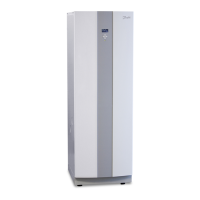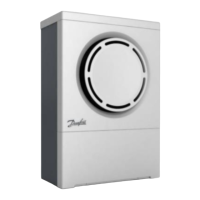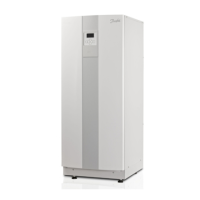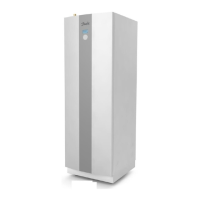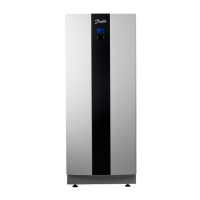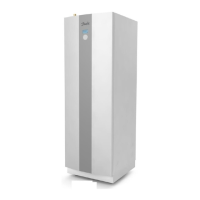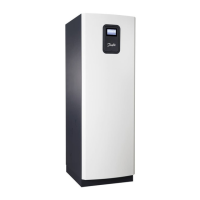Cause Troubleshooting Remedy
7. Lack of condensation insulation on cold
water pipe and/or brine pipe.
Establish where the condensation is coming
from.
The brine pipe must always be insulated.
In the event of problems with condensa-
tion on the cold water pipes, insulate them.
Condensation often accumulates in joints
and angled sections of the insulation.
Improve the insulation.
8. Leak at soldered joints. Locate the leak. Drain the system of fluid, repair the leak. If
the leak is on the connection pipe to the
heat exchanger, also drain the refrigerant
side.
9. Leak at the condenser’s drain cock. 1. Check that the valve is completely closed.
2. Check that the sealed cover is sealed.
If the sealed cover is not sealed, replace the
sealed cover or the entire drain tap.
10. Leak at the condenser’s bleed valve. Check that it is completely closed. If it is fully closed and still leaks, replace it.
11. Leak at soldered joint on water heater. Locate the leak. If there is a leak at the soldered joint,
replace the water heater.
12. Associated leak on the water heater. •Establishwhetherwatercontinuously
leaks from the safety valve on the expan-
sion vessel on the hot side.
•Establishwhetherwatercontinuously
leaks from the safety valve on the cold side.
If the water heater has a leak, replace it.
13. Associated leakage in the condenser. •Checkforlackofrefrigerantintheunit.
•Checkbysmellingbysafetyvalveonthe
hot side, open the valve and check.
If the condenser has a leak, replace it.
14. Anti-freeze is forced out of the safety
valve on the expansion tank (brine system).
During the winter, water surrounding the
hoses in the borehole can freeze. In some
cases, the ice can push against the hoses
slightly. Due to the reduction in volume in
the hose, the anti-freeze fills the expansion
tank and eventually forces some fluid out of
the safety valve.
When the ice in the borehole melts and the
hose expands and returns to its original
state, a vacuum is generated which results
in a reduction in tank level. As the safety
valve does not let any air in, the expansion
tank can retract inwards due to the vacuum
created.
To prevent anti-freeze from being forced
out from the safety valve, you can exchange
the existing expansion tank for a closed
pressure expansion vessel with a greater
volume.
To prevent the expansion tank retracting
inwards, a vacuum valve can be installed in
the system.
NOISE
Problem – Noise problem in the radiator system
Cause Troubleshooting Remedy
1. Flexible hoses missing. Flexible hoses must be installed according
to the instructions.
Install flexible hoses according to the
instructions.
2. Incorrectly installed flexible hoses. Flexible hoses must be installed according
to the instructions.
Install flexible hoses according to the
instructions.
3. Installing/suspending pipes. Check if the mountings are too rigid, right
type, right sizes and/or installed too close
together.
If something seems to be incorrect accord-
ing to the troubleshooting window, carry
out corrective actions.
4. Clicking. •Establishwhenclickingoccurs,during
heating and/or in connection with com-
pleted hot water production?
•Locatetheclickingnoises.
A surge tank can be installed on the supply
line to mix the hot water with the existing,
slightly cooler, water, before it goes out to
the radiators.
Try lubricating lead-ins in walls, ceilings and
floors with silicone spray.

